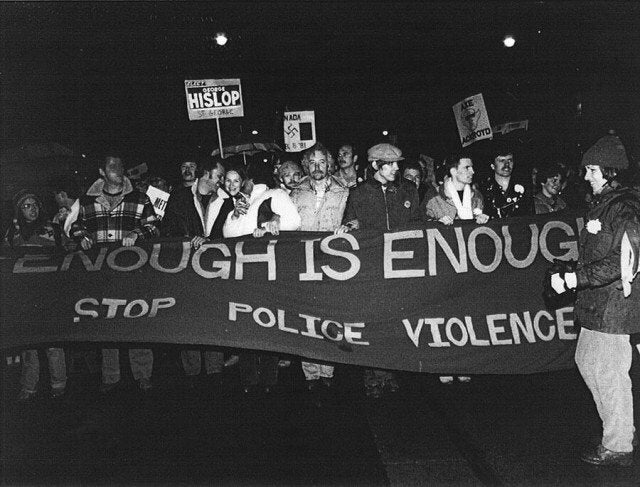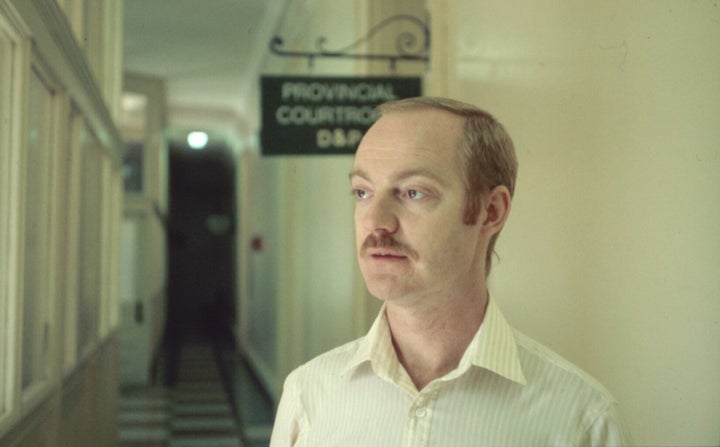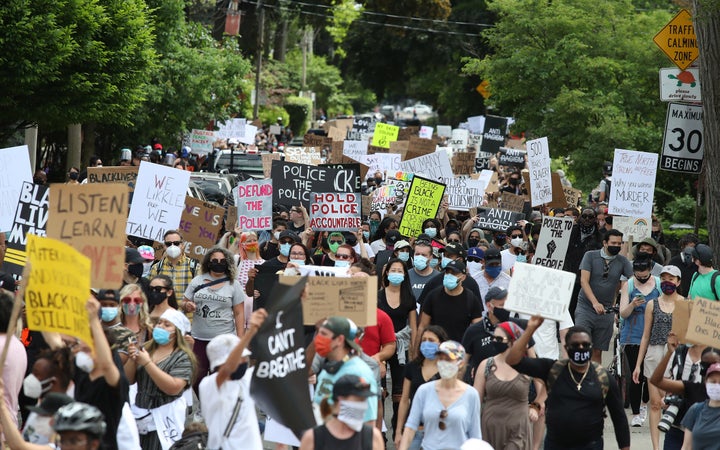As told to HuffPost associate editor Connor Garel
I would have been arrested that night. I would have been at one of the four gay bathhouses that Toronto police raided, where 300 men were rounded up and, in some cases, beaten, photographed naked and humiliated. Normally, those were wonderful places to be in, and I was a regular patron. I knew the owners. I supported their operations full time. So on any other night, you’d have found me at the bathhouses. But on February 5, 1981, I wasn’t there.
Still, I sprang into action. I can’t recall exactly how I heard what happened that evening. At the age of 72, one begins to forget the details of one’s own life. What I do know is that, 12 hours after the raids, I and others were out in the streets with our community, handing out flyers and helping to organize a demonstration — one that was a parallel to the Black Lives Matter protests we see today, which prove the relationship LGBTQ+ people have with the police isn’t so different now from what it was back then.
This was how Pride in Toronto began: as a demonstration of anger against the police. I worry that many young white queer people have forgotten these roots and that, to them, Pride is just a celebration. It is that, but we must remember the point of the whole thing: to stand up against homophobia, transphobia, racism, and to show we will not tolerate any form of oppression.

I don’t remember how I got those flyers. One minute I was baking cheesecakes, and the next, I was throwing them in the oven, setting the timer, and running off to Buddies Bar, a block and a half away from my home, to hand out flyers to anyone who walked through the doors. I would tell them, “you have to come to the demonstration at Yonge and Wellesley tonight.”
This was before the internet, so we had a phone tree system, too, that we used earlier in the day: I called 12 of my friends, who called 12 of theirs, and soon enough, we’d organized hundreds for a protest against the raids and the police.
When my oven timer went off, I ran home from Buddies. I took my cheesecakes out of the oven. I let them sit. Then, that night, I went to the demonstration at Yonge and Wellesley.
‘We all came together. We all did something.’
We took over the streets. Thousands of people showed up, and it wasn’t just queer people. Anyone in the city of Toronto who had any kind of political savvy realized what the police had done: they were trying to slap us back into the closet.
When the bathhouses were raided, it was a signal that any progress we thought we’d made up until that point — whatever connections we thought we’d made with the broader community, whatever civic rights we thought we’d secured since the late ’60s — none of it mattered. It was all being threatened. The police, the government and the state were complicit, and they weren’t concerned with us being bashed in the streets. We always had to defend ourselves. We even set up the Toronto Gay Patrol, a group of Toronto activists formed to protect queer people against the gay bashings that police were either failing or refusing to respond to.
There was never any question of getting involved or not. Cops were destroying our communities and arresting our friends. Suddenly, people who had never been politically active were being arrested in the bathhouses, or seeing their friends get arrested, and they decided that if they didn’t do anything to stop it, we would all be sunk. Everyone realized this was our turning point, that this was our Stonewall. You didn’t think about it — you just got involved.

Our lives became very busy after that. Some people volunteered at The Body Politic — a monthly Canadian magazine that was vital to the early gay liberation movement — where they published stories. Others went to dances, or demonstrations. Some of us, like myself, got involved in the Right to Privacy Committee.
I joined the legal defence committee that represented the 306 men who were charged after the raids, and I helped with getting their charges dismissed in court. I was there at nearly every trial, and got to know all the judges, lawyers, many of the cops and even the Crown attorney. I even carried a briefcase with me, with copies of case law inside. If a lawyer was arguing a particular subject and the judge said, “I don’t understand that,” all they would have to do was look at me, and I would produce three copies of the material that would clarify things: one for the Crown, one for the judge, and one for the lawyer.
I didn’t know anything about legal defence before the demonstrations. But I learned at the meetings that our community leaders and activists organized. There were actual classrooms where we were teaching each other about communications, politics, organizing demonstrations and things like that. Those meetings were always full. There wasn’t a seat to be had.
We all came together. We all did something.

Fear of complacency
The death of George Floyd is an example of how nothing has really changed.
The police are still abusing their power, and are still brutalizing communities, just as they were brutalizing the gay community in 1981. And we absolutely must put a stop to that. We know from the evidence that body cameras and reform do not affect the behaviours of officers. We have to remove the funds from the police and redirect it elsewhere.
Since the demonstrations we held in 1981, I think the white community, and white gay people specifically, have become complacent. As settlers, we’ve become too comfortable. Many think that because they can get married now, the fight is over. They don’t fear for their lives, because they forget about the protests that gave them their freedoms. They don’t feel oppressed anymore, by police or anything else, which is why they opposed the Black Lives Matter action in 2016. They think they can go anywhere and still feel safe. But that isn’t true for Black people. It isn’t true for Indigenous people. And the fight is not over until it’s been won for everybody.

In 1981, at that first demonstration we had against the raids, Black key speaker Lemona Johnson recounted how, two years before, the police had killed her Jamaican-Canadian husband. Her story illustrated how police violence against Black communities paralleled the violence experienced by the gay community, marking an immediate realization that we weren’t the only ones the police were oppressing. And in the beginning, we reached out to the Black community to build a relationship because we realized we were fighting the same fight, and that we couldn’t do it alone.
But, we didn’t follow through. I’ll be the first to admit that one of our greatest failures was in nurturing our relationships with Black and Indigenous communities. We allowed that relationship to wither on the vine. And I don’t want that mistake to be made again today because white people think they have nothing to fight for.
We need to come together and organize. We need to get off the couch. We need to start reading. We need to learn our history. We need to stop being passive. If you recognize that Black Lives Matter has anything to say to you, then go out and learn what you don’t know. It’s not their responsibility to teach you — it’s your responsibility to teach yourself.
Have a personal story you’d like to share on HuffPost Canada? You can find more information here on how to pitch and contact us.
EDITOR’S NOTE: We believe that the HuffPost Canada community should be a safe and welcoming space for all users to engage in a meaningful dialogue, and our community policy is intended to preserve such an environment. Therefore, we have closed commenting on this story, due to overwhelming comments that violate that policy.
Also on HuffPost: